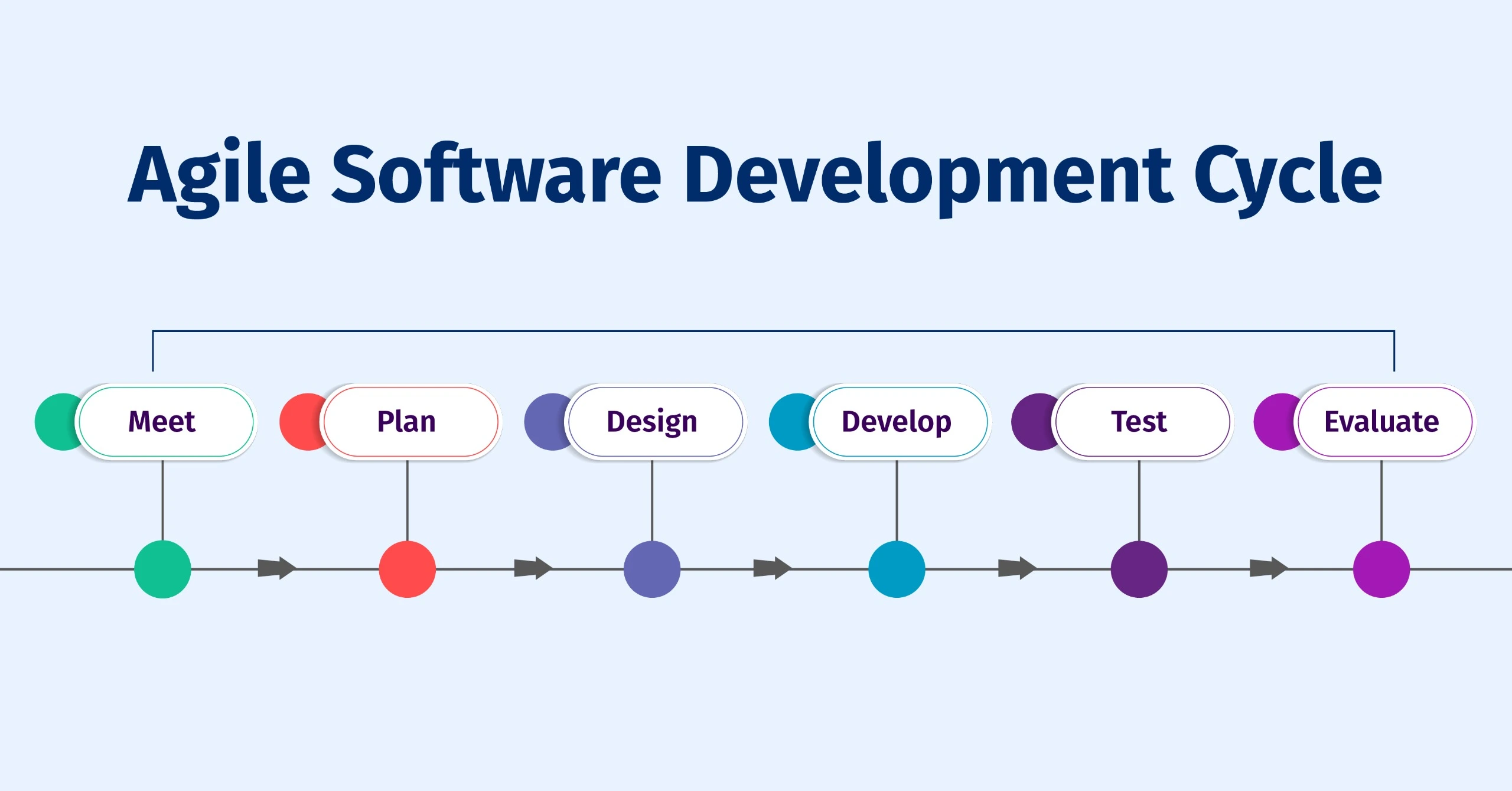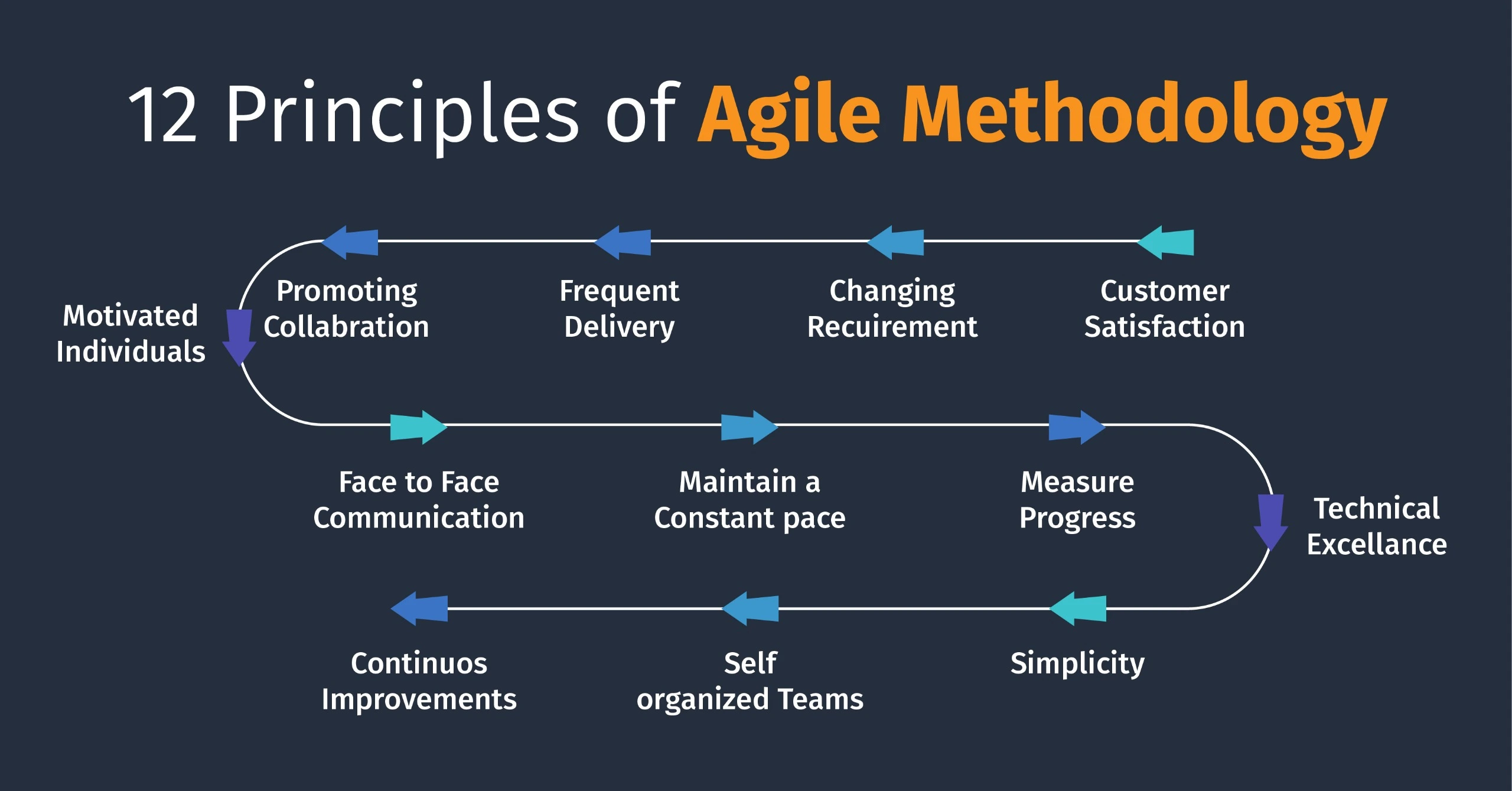

In the fast-moving world of software development. Businesses are always looking for ways to be flexible, and adaptable, and deliver products efficiently. Also, Agile software development is a top choice for meeting these needs. In this guide, we will explore the main ideas of agile development. As well as how it works, its benefits, and its guiding principles.
Agile software development is a way of building software where teams work together, making small improvements over time. It’s all about being able to adapt quickly to changes and keep making things better. They focus on delivering usable software in short bursts, listening to what customers have to say along the way. This method helps teams stay flexible, and work efficiently. It also makes sure the final product meets everyone’s needs, making customers happier in the end.
We use Agile for software development because it helps teams adjust to changes, work together better, and make software quicker. It breaks the work into small parts, so teams can be more flexible and fix problems early. Agile also improves communication among team members and customers, making sure the final product meets everyone’s needs. In the end, Agile makes development smoother, lowers risks, and makes customers happier.
The agile system development or agile software development life cycle is also known as the Agile Development Lifecycle (ADLC). It includes different stages that happen again and again. These stages typically include:

Agile software development follows some rules written in the Agile Manifesto. These principles include:

Agile system development offers several advantages over traditional development methodologies, advantages agile software development including:
An example of Agile software development is a team making a new mobile app. They start by planning what features the app will have and then design how it will look. After that, they code small parts of the app, testing it often and asking users for feedback. They use that feedback to make the app better. When it’s ready, they put it in the app store. Even after it’s out, they keep updating it based on what users say, following Agile principles.
Learners Also Read: A Comprehensive Guide to 5 Data Lifecycle Phases
In conclusion, Agile software development changes how teams make software. By focusing on flexibility, teamwork, and getting better all the time. It uses a cycle of planning, designing, making, testing, and using. As well as getting feedback to deliver good products that fit what customers want. Following Agile rules and using its benefits like flexibility, faster time to finish, and better quality. Also, making everyone happy, and handling problems well, helps businesses stay ahead in today’s fast world. Using Agile helps teams change quickly, think of new things, and always make customers happy.
Ans. Agile is like a big idea that talks about being flexible and working together in software development. Scrum is a part of Agile that gives a clear plan for how to do the work. Agile is more about ideas, while Scrum is a step-by-step guide for teams to follow. So, Agile is like the big picture, and Scrum is the detailed plan to get there.
Ans. The five stages of Agile methodology are:
1. Planning (deciding what to work on),
2. Designing (deciding how the software will look),
3. Developing (writing the code),
4. Testing (checking for errors), and
5. Deploying (putting the finished product into use).
About The Author:
The IoT Academy as a reputed ed-tech training institute is imparting online / Offline training in emerging technologies such as Data Science, Machine Learning, IoT, Deep Learning, and more. We believe in making revolutionary attempt in changing the course of making online education accessible and dynamic.

Digital Marketing Course
₹ 9,999/-Included 18% GST
Buy Course₹ 29,999/-Included 18% GST
Buy Course